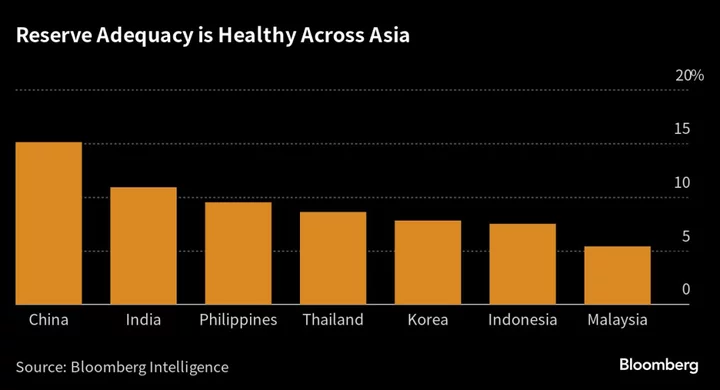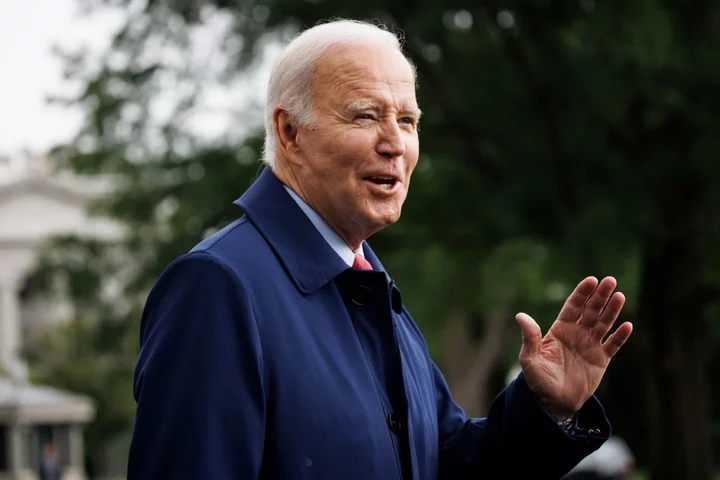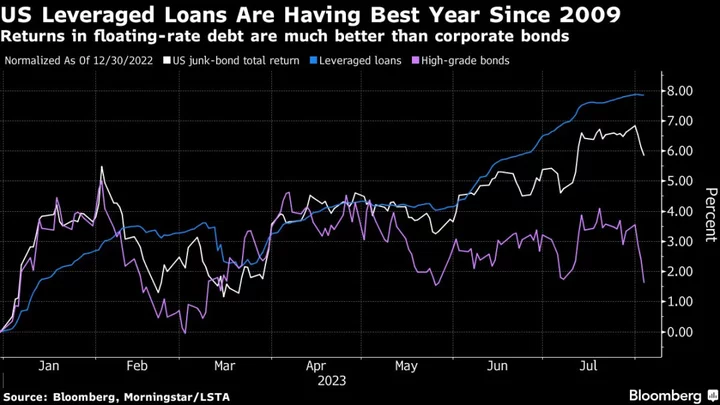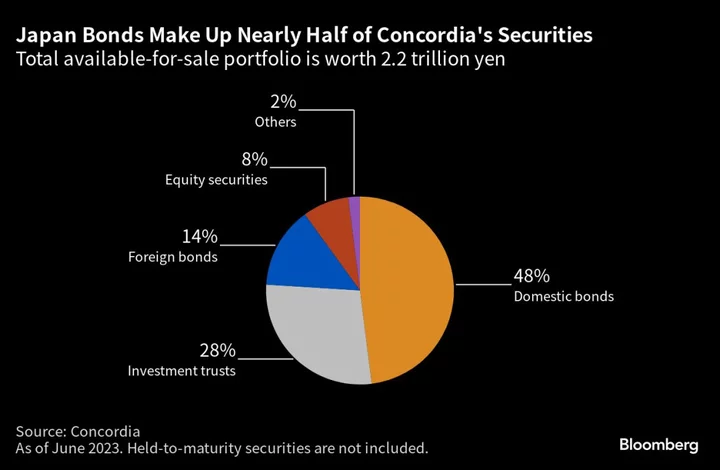The dollar’s recent rally has been relentless. But Asia’s central banks have the firepower to limit the fallout.
Policy makers in the region have more than $5.5 trillion of foreign-exchange reserves that they can deploy to shore up their currencies, according to calculations by TD Securities, using data compiled by Bloomberg. The stockpile reached a record high of $5.9 trillion in 2021.
Focus is shifting to what steps authorities in the region may take after verbal warnings and stronger fixings failed to arrest the downdraft in their currencies. While exporters stand to benefit if their currencies weaken, a sustained bout of depreciation risks triggering capital outflows.
“Asian central banks have the firepower from their FX reserves like last year to intervene if they choose to,” said Alex Loo, Singapore-based Asia FX and macro-strategist at TD. “We think jawboning efforts may suffice for now.”
So far, authorities have resorted to verbal intervention to defend their currencies, as seen in Japan, China and Thailand. The Reserve Bank of India has gone a step further by selling dollars to stop the rupee from hitting a record low. Bank Indonesia has also said it’s in the market.
“Asia continues to follow an eclectic approach to managing exchange-rate pressures, including the usage of FX reserves as the first line of defense in case of continued outflows,” said Sonal Varma, chief economist India and Asia ex-Japan at Nomura Holdings Inc.
India, Thailand and the Philippines are likely to keep using reserves to curb excessive swings in their currencies and limit imported inflationary pressures as food and oil prices rise, she said.
Even so, authorities in India and the Philippines “are unlikely to cap spot upside pressures indefinitely, if depreciation pressures are persistent and driven by fundamental factors,” Nomura strategists including Craig Chan wrote in a note Tuesday.
The greenback’s rally has blindsided the likes of HSBC Holdings Plc and Morgan Stanley Investment Management which started the year by predicting that emerging-market assets would perform well. The yen has dropped more than 12% against the dollar since end-December, the onshore yuan slid to the weakest since 2007 last month while Malaysia’s ringgit is closing in on a 1998 low.
Asia’s Last Holdout Against Strong Dollar Falls as Rupiah Slips
The good news is that most Asian central banks have an import cover ratio - the number of months of imports that reserves can cover - well above the traditional rule of thumb of three months. They have also topped up their reserves after dipping into the stockpile to defend their currencies in 2022.
The reserve position in emerging Asia excluding China, on the basis of import cover, remains the highest in Taiwan, followed by India, Philippines and Thailand, said Shreya Sodhani, Singapore-based economist at Barclays Plc.
“We doubt Asian central banks will be willing to hike rates in response to the strong USD,” Sodhani said. “Intervention through reserves or verbally could be the option chosen by central banks which start to get concerned.”









